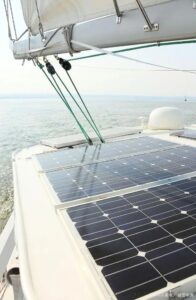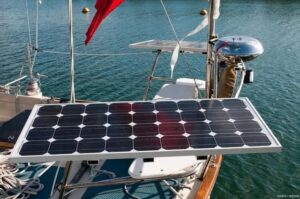Development of solar panels in the field of transportation
As more and more people and industries rely on different solar energy technologies (such as solar panels) for power generation, the dependence on solar energy is rapidly increasing. At present, solar panels can provide a large amount of energy for household life, and can be self-sufficient in a short period of time after installation. In addition, solar energy has recently been applied to transportation, and with the development of solar powered vehicles, it has expanded to public transportation, air transportation, and maritime transportation.

Marine solar panels
Marine solar energy has several advantages, including reducing carbon emissions, diesel costs, and significantly reducing noise levels. According to the type of solar panel and charging controller system, the industry has developed to provide shipowners with a variety of different solar options
Glass panels: Provide maximum power at a lower cost, making them the most popular panel type. Glass panels can be divided into two types: polycrystalline and monocrystalline. Polycrystalline silicon is cheaper, and of course, its conversion efficiency is also lower, thus occupying a larger area. Monocrystalline silicon is more expensive, but with high efficiency, it occupies less space.
Flexible solar panels: Previously limited to “amorphous” solar technology, they can now fit more closely to the curvature of the ship’s surface.
Installing solar panels on board the ship
When considering installing solar panels on ships, several factors need to be considered. Insufficient space is one of the main obstacles. Based on this, solar panels must have space and allow for the possibility of walking on them, in order to maximize the utilization of available space. Some panels have been developed to allow suspension on the mast, thereby optimizing all possible spaces. On larger ships with larger spaces, glass panel solar panels can be installed to provide maximum power at the lowest cost, but cannot be walked on.

Installation phase
Similar to all solar installations, the process of installing solar panels on ships can be divided into several stages:
The first stage of this process is to conduct an electricity assessment on the vessel to determine how much electricity the vessel uses per day.
This information can be used to determine how much energy a solar panel should generate, thereby determining the required size of the panel.
Finally, decide which type of panel to install and choose between glass and flexible panels.
The benefits of solar panels on board ships
By installing solar panels, the cost of maintaining and operating ships can be greatly reduced. If a high-performance solar system is installed, the ship can sustain itself and completely eliminate fuel costs. The load of the battery pack will be reduced, which is easier and cheaper than generating more electricity. Carbon dioxide emissions will also be reduced, and noise will also be significantly reduced.
Improving the efficiency of solar panels is usually the first step in any power system upgrade. By carefully selecting the equipment to be powered, the average daily energy demand can be significantly saved. Having an efficient power strategy requires smaller battery packs, smaller solar panels, smaller wind turbines, smaller cables, and a lighter total system weight.If you want to know more about solar panels, please contact us, the solar panel manufacturer – Huanqi Technology (Shenzhen) Co., Ltd.




